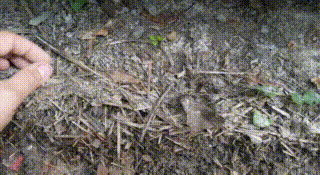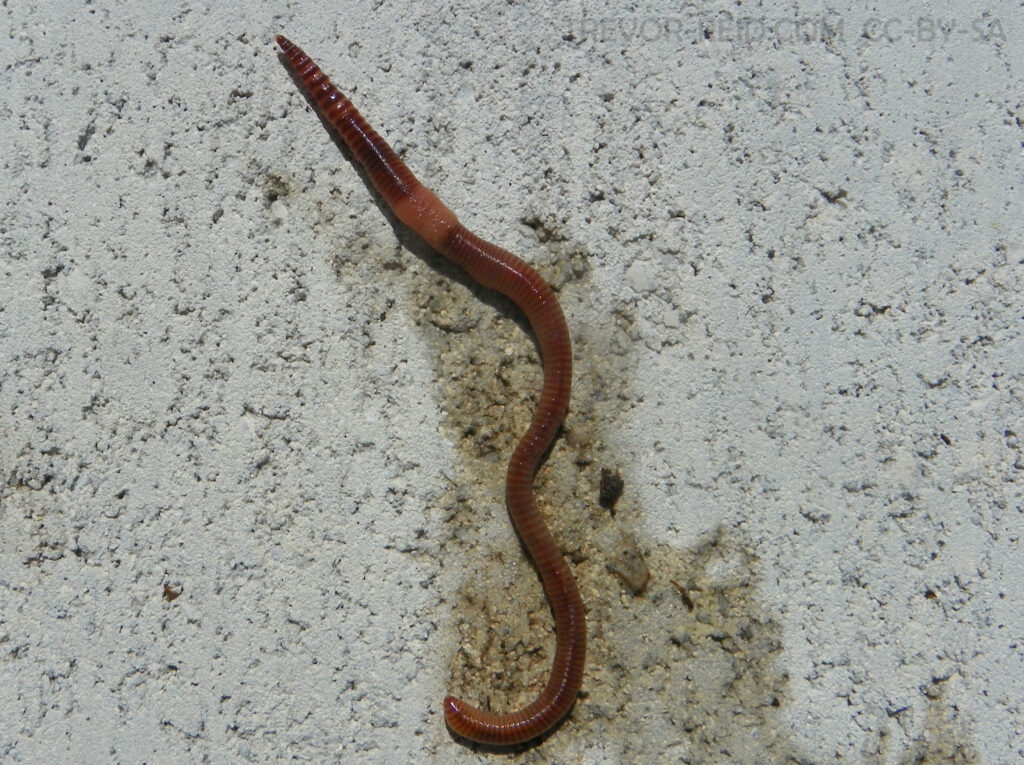by Brooke Paligo
Growing up, I spent a lot of time playing at my grandparents’ house in Tennessee, where it often rains. The earthworms would always spring up from out of the ground and mosey their way onto the moist driveway. I felt bad for the earthworms because as soon as the hot, humid sun came out they would shrivel up and die. Whenever I saw the curious little worms, I would take a fork from the silverware drawer, scoop up the worms, and place them back on the grass. This simple act of rescuing the earthworms not only gave little-me a sense of heroism but also sparked my early interest in these small creatures.
Earthworms are remarkable burrowing invertebrates, and native worms play a vital role in maintaining the soil in their habitat. By burrowing, earthworms help maintain the necessary moisture levels needed to breathe through their skin. As they tunnel, worms feed on a variety of organic material such as decomposing plant and animal matter, fungi, and bacteria. This diet breaks down and recycles organic matter, enriching the soil. According to the USDA, the digestion process of earthworms further enhances the soil, as the material they excrete is rich in nutrients. Additionally, earthworms not only loosen, mix, and oxygenate the soil as they create burrows, but they also disperse vital microorganisms that can break down pollutants and help repair damaged soil. Native earthworms are fundamental in preserving their habitat’s soil.
While native earthworms are a boon to their surroundings, invasive earthworm species present a significant challenge to their ecosystems. In the 1500s, settlers from Europe came to the Americas, and they brought non-native earthworms to the Americas. According to researcher Michael McTavish, “There are now more than 30 species of non-native earthworms in Canada.” Invasive earthworms, such as European nightcrawlers and Asian jumping worms, have the potential to rapidly change environments because they decompose plant matter much faster than what ecosystems are used to. These non-native species break down the leaf litter layer that many native plants and animals rely on, and this leads to changes in pH, texture, density, and nutrients. As the leaf layer diminishes, the soil becomes less hospitable to native species which can lead to the decline of native plants, soil invertebrates, and animals.

Additionally, invasive earthworms are also contributing to increased carbon emissions in the taiga, a biome characterized by a dense layer of decomposing leaves, fallen wood, and moss, and found in cold, subarctic regions such as Canada. Unlike native species, these invasive earthworms primarily decompose surface leaf litter which leads to release of stored carbon into the atmosphere. This behavior significantly reduces the amount of carbon that taigas will absorb and can turn taigas infested with invasive earthworms into higher carbon emitters. Consequently, this released carbon has the potential to worsen global climate change.
As stewards, we have been given the sacred task by the Lord to care for this Earth. We have been frequently taught “by small and simple things are great things come to pass” (Alma 37:6). Earthworms, even though they are such small and simple creatures, can have such a profound impact on our ecosystems. By taking small actions to mitigate the growing problem of invasive earthworms, we can make significant progress in protecting our ecosystems once we work together. These measures include avoiding the transfer of soil that might carry earthworms and their eggs and being cautious about using invasive species for bait or gardening. Purchasing heat-treat mulch and compost or bagged products also eliminates the risk of introducing invasive earthworm cocoons into our gardens. When planting, inspect for worms and consider purchasing bare root stock to reduce the risk of transporting invasive worms.

By working together as stewards of the Earth, we can help mitigate the problem of invasive earthworms. Through collective efforts, we can help limit the contributing factors to climate change and help restore affected soils to their natural state. Further, by engaging in community education and outreach, we can spread awareness about the ecological impacts of invasive species and encourage others to be a steward for the Earth. Each step we take, no matter how small, contributes to the larger goal of ecological preservation and sustainability. Together, we can ensure that our local ecosystems are maintained for future generations to come.
Brooke Paligo was born in Tennessee and lived there for 16 years until moving to Utah. She is currently a high school student aiming for a Ph.D in environment science. Brooke believes that before we go to another planet we should save this one.
Note: Blog posts are written by volunteer writers; the opinions of writers are their own and are not necessarily representative of Latter-day Saint Earth Stewardship.
